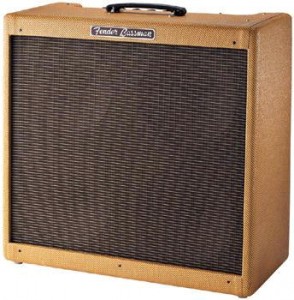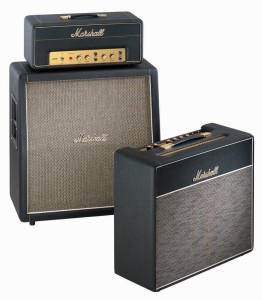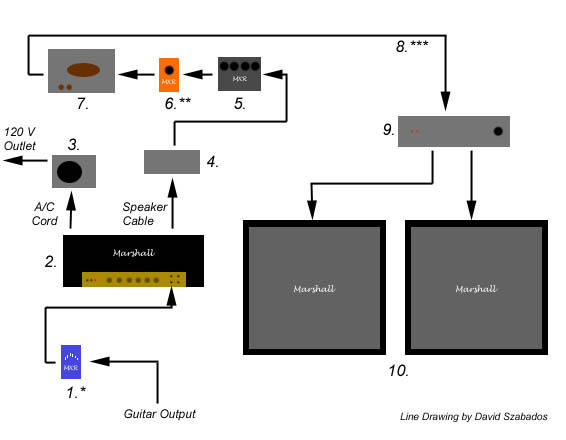I loved the sound of the flanger from the first time I heard it used on recordings. I thought the jet-sweeping flanging sound used on recorded drums was simply awesome. Then I listened to Eddie Van Halen’s guitar on “Unchained” and thought it was cool having the up and down sweeps of the flanger move along in time with the dropped D pedal tone riff. After hearing that, I just had to have one for myself.
Read More »
All posts by David Szabados
Review of Seymour Duncan Phat Cat P-90 Pickups
Introduction by David Szabados, Review by Mike Mullen
After playing through a P-90-loaded guitar for the first time, my immediate thought was, "OMG! Where have you been all my life? And where have I been all these years!?"
While focusing on getting my ideal rock and blues tones for years, I’ve always played through and with countless variations of Les Pauls and Stratocasters (and copies) with a myriad of pickup arrangements. For one reason or another however, I had never gotten to trying a guitar equipped with P-90s. Until late last year…
Read More »
The Fender Custom Shop Experience
Jimi Hendrix. David Gilmour. I grew up admiring both of these artists…and their Stratocasters. Hendrix is most famously known for his late ’60s white “Woodstock” Strat, while Gilmour is best known for his black Strat (now a signature Fender model) which is a “mutt” of various parts – but started out as a circa 1968 stock model.
These late ’60s Strats are most easily identified by use of the large headstock design that originated after the CBS purchase of Fender musical instruments in 1965. Hendrix can be seen with his favorite Strat (he preferred his black one over the white he used at Woodstock) in his famous performance captured on video at The Isle of Wight in 1970. Gilmour used an identical black with maple board model in the Pink Floyd “Live at Pomeii” film shot in 1972. These classic performances, and those Stratocasters, left an impression on me that continues to this day.
Read More »
Typical Early Edward Van Halen Studio Setup Diagram
- MXR e.q. set up as midboost (* only occasionally used depending on the guitar)
- Marshall plexi Super Lead, unmodified, although simple modifications such as a cascaded input stage or added gain through capacitor/resistor exchanges may have been made.
- Ohmite VARIAC set to approximately 90 Volts A/C
- Dummy Load
- MXR Flanger
- MXR Phase 90 (** This was sometimes put in front of the amp instead of after the dummy load)
- Echoplex EP3
- (***Equalization sometimes added prior to power amp)
- H & H power amp
- Various Marshall cabinets (sometimes two, sometimes four) used with various Celestion and JBL speakers
Marshall JTM-45 Reissue Modification – Part II
In part I of our Marshall JTM-45 transformation process, we installed a point-to-point board from Metropoulos Amplification and began to hear the positive results of our test Marshall as it came to new life.
Now, in Part II of our continued Marshall JTM-45 transformation, we move forward with two additional changes in addition to having the opportunity to compare the final results to an original 1964 badge-logo Marshall JTM-45. The two changes that we decided to perform were to swap out the stock output transformer to a Mercury Magnetics Axiom O45JT-C model as well as to upgrade the board’s capacitors to those made by SoZo Amplification. To say that we were excited as well as just plain curious about the final results, especially when we could now compare it to an original JTM-45— is an understatement.
Read More »
EQ Tips
We do get quite a lot of e-mails from folks asking about how they should set their tone controls on their amps and/or pedals. In fact, this "how should I set things?" question is the number one question we get here.
As a result, I thought the time was right to discuss equalization in general and offer some EQ tips. Much of this information comes from my own years of trial and error as well as from the valued insight of others. Even all these years later, I continue to learn from various people, mostly on the Internet these days, and of course I still experiment. I hope you find this information useful!
Read More »
Magus Innovations’ “The Ultimate Attenuator”
When any new product comes out that takes an interesting new twist on a design, it of course always piques my curiosity to check them out. I was recently contacted by a new maker of a device called "The Ultimate Attenuator" that falls into just that category. If you’re unfamiliar with power attenuators, they simply enable you to take the signal of a fully-cranked tube amplifier and then bring the volume levels down to those necessary to play in various club/rehearsal environments – and some designs can power down to bedroom levels as well.
Read More »
Weber MASS Attenuator
The past several years have brought about an era of reinvigoration for vintage non-master volume style amplifiers and I believe some of the reason is due to the fact that there are some great choices for attenuators out on the market today. Everyone knows that there is nothing that can harmonically compare to the tone of a quality vintage tube amp cranked up with its warm power tube distortion running along with its preamp gain. But the trick has been trying to capture that great tone at lower volumes and that’s where an attenuator can come in very handy.
Read More »
Fender 59 Bassman LTD
 The Fender Bassman evolved as an amplifier designed to initially go along with the Fender Precision Bass. It’s perhaps a bit of an irony that this amp design is among the most revered from guitarists – not bass players. Add to this the fact that the first Marshall amplifiers were largely leveraged from the Bassman’s circuit design (which in turn spawned a countless array of further clones as time passed), and it’s easy to understand why the Fender Bassman was the first amplifier chosen as a tweed reissue in the early ‘90s.
The Fender Bassman evolved as an amplifier designed to initially go along with the Fender Precision Bass. It’s perhaps a bit of an irony that this amp design is among the most revered from guitarists – not bass players. Add to this the fact that the first Marshall amplifiers were largely leveraged from the Bassman’s circuit design (which in turn spawned a countless array of further clones as time passed), and it’s easy to understand why the Fender Bassman was the first amplifier chosen as a tweed reissue in the early ‘90s.
Marshall Hand-wired Reissue 18 Watt Combo and 20 Watt Head/Cabinet
Introduction
 Marshall’s long-awaited handwired series reissue amplifiers are finally here with the debut of the company’s 1974X model 18-watt combo and 2061X model 20-watt head with 2061CX cabinet. These first reissue models are based on the originals produced in the ‘60s and ‘70s and Marshall has assured us that every attention to detail has been made. And these are not limited-edition reissues, but are part of Marshall’s regular production lineup!
Marshall’s long-awaited handwired series reissue amplifiers are finally here with the debut of the company’s 1974X model 18-watt combo and 2061X model 20-watt head with 2061CX cabinet. These first reissue models are based on the originals produced in the ‘60s and ‘70s and Marshall has assured us that every attention to detail has been made. And these are not limited-edition reissues, but are part of Marshall’s regular production lineup!
Even the included manuals proudly cover the story of the many detailed aspects of the design and development. From the cosmetic finish to the construction details of the transformers and customized speakers, it is clear that Marshall team set out on a mission to create the ultimate reissues.
Read More »
